Shrews
 Bashny.Net
Bashny.Net
Have you heard anything about shrews? They guzzle a lot. Indeed, depending on the kind and size of each shrew necessary per day to consume food in half to two times more than it weighs itself. And this despite the fact that representatives of the shrew family - the smallest mammals on the planet. And what would happen if they were at least the size of a dog?
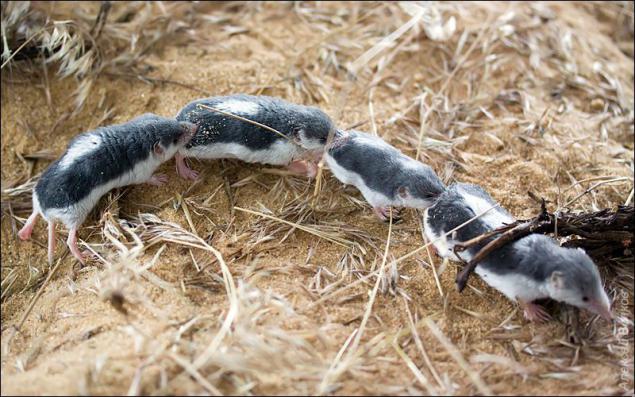
But nothing special would not be - then they would eat much less, about as much as any other animal the size of a dog: small shrew eats a lot, not because it is a shrew, but because it is small. Warm-blooded animals are smaller, faster lose heat, and the faster they need to replenish energy losses. Therefore, shrews feed almost continuously, they even sleep properly once, sleeping fitfully on their own schedule, and the smaller the shrew, the greater her sleep-wake cycles during the day; so, a tiny shrew (Sorex minutissimus) per day divided into 78 intervals. From these animals die of hunger (again depending on the size) for 5-9 hours in the summer, and in winter even faster - for 3-4 hours. The most worthless to them that in the long-suspended animation, like other crumbs - bats - shrew really fall do not know how, though, and try (with a lack of food fall instead of sleeping in a stupor with a decrease in body temperature), and therefore forced to aktivnichat day and night, winter and in the summer.

In the summer of shrews feed mainly on animal food - arthropod, worms, and larger prey themselves, such as lizards and mice, and is rumored to manage their grubs with bones. Beekeepers say that is such a shrew, as in the picture, can alone devastate a hive and jump to the next. And that, perhaps, the only harm from the shrews, the rest - continuous use: the population of these animals living on one hectare, absorb over the last month from 5 to 20 kg of various insects, and for the year - 100-200 kg. Gluttony is a natural side effect - shrews much cocoa, thus contributing to a lot of soil formation.
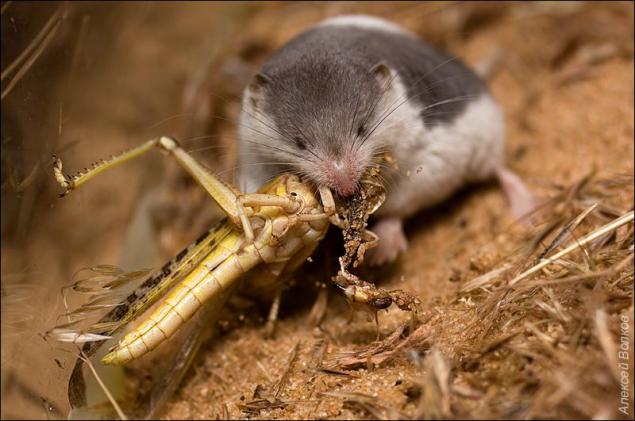
In the winter of arthropods as tight as the demand for energy increases, and shrews have to add to your diet and seeds applied ability called "phenomenon DENEL" - they reduced the size of the body, including the skull, and the weight of the brain. Spring animals grow back and re-grow their brains.
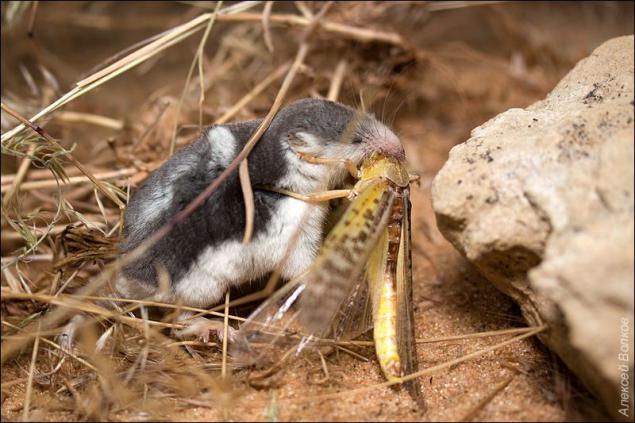
A shrew brains - God forbid everyone, their weight is about 1/10 of the body weight, it is more than that of any other mammal, including humans. In addition to the brain evolution has endowed these animals the ability to echolocation, and water shrew (only natatorial kind) - and even paralyzing saliva that makes bitten her immobility and invertebrates retain freshness for 3-5 days. Refers to the aforementioned shrew shrew one subfamily - burozubochih and teeth are really brown - their enamel pigments reinforced with iron for greater strength. Change of milk teeth is still in the womb.
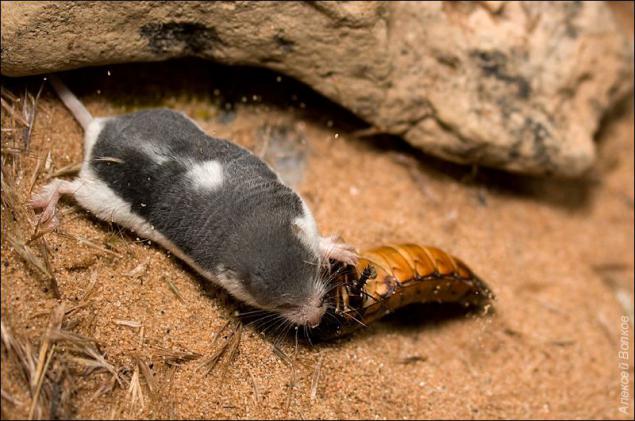
Shrews do not dig the ground - their legs are ill-suited for this. Enjoy ready burrows of rodents, and more - just inhabit the forest floor. And they are called so because in the land of "digging" - with the help of his elongated nose, proboscis seek out the top layer of loose soil insects hiding there. Their main instrument of orientation at night among the intertwining roots and stems, in addition to smell and touch, is echolocation.
Hunting way shrews are constructed in such a way that one day, she eats only a small portion of the territory and return to it again just a few days, when it will recover supplies of food. And the size of the territory depends on the season.
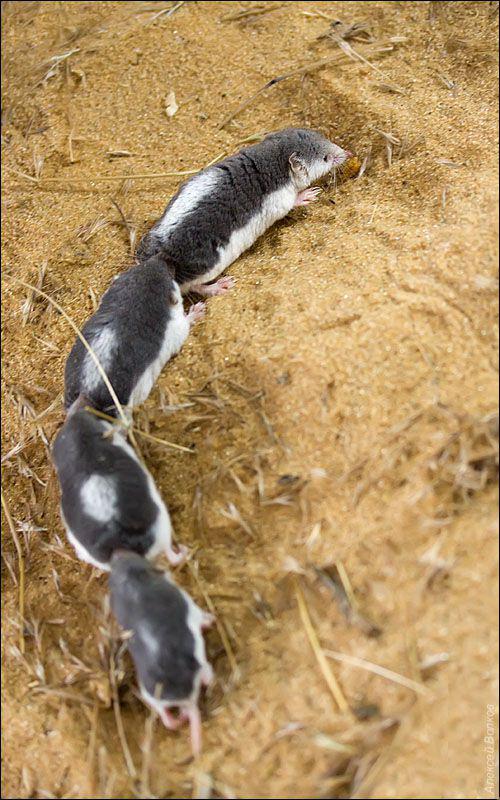
In autumn, when the number of shrews is greatly increased at the expense of young people for summer, one small animal goes to a small area of 300-500 sq.m. In winter, many animals die, and survivors in the spring gets about twice as large plots - the offspring of the plant.
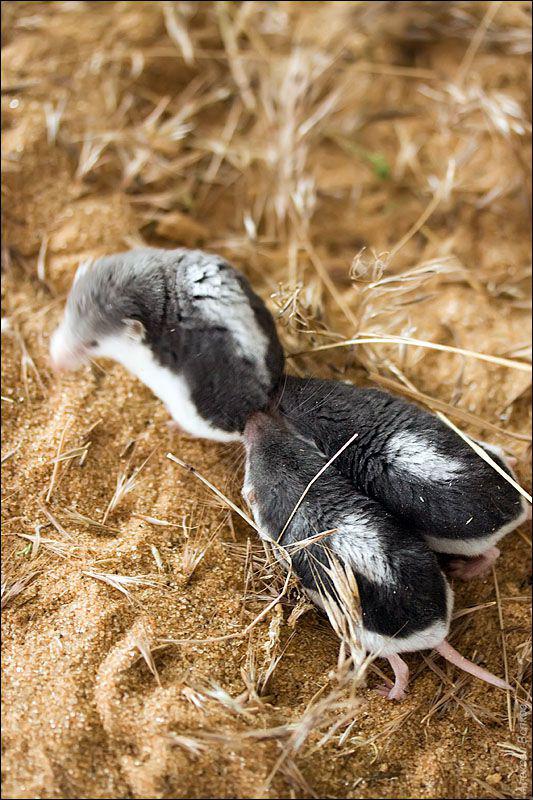
During the summer, they manage to give rise to two or three broods of young shrews. In July and August the number of shrews peaks - an average of 40 animals per hectare, and then decreases as the die-life obsolete old animals. The first year of the young and high-spirited shrew is growing and gaining strength, but have not yet reached puberty. After winter, if you're lucky, and she survives, they have the ability to reproduce, and by doing it his duty to nature, dying, giving way to their hunting grounds to the next generation. So spinning the wheel of life.
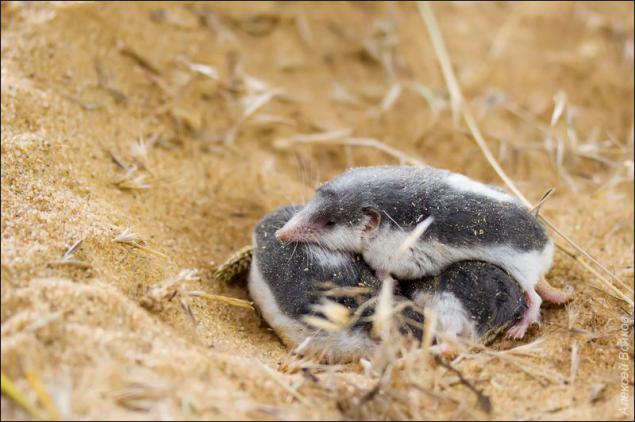
The cubs grow fast, and you do not lose the mother they have an interesting technique - when it is time to find a new hole or necessity compels the family to leave the shelter, one of the cubs missing mummy's ass, while another dyatё enough ass already clinging to the mother of the cub, and so on in turn. And so a makeshift train travels over the surface. For one night putoraki can easily walk about 8 kilometers ...

Sometimes the train is stuck, because from mothers having their own plans, and the cubs never fail to grab for the mother if she suddenly ran past.
It looks very fun.

And when the kids are tired of the constant search for the mother, they bunch up and go to sleep, because they know for sure that their caring mother, and certainly not throw enough. It always happens, the mother of a hurricane hits the land of nod, and the new train sets off.

Despite the tough struggle to fill up an adversary to our hero it could not be proved to be too hard chitin shell Madagascar cockroach.
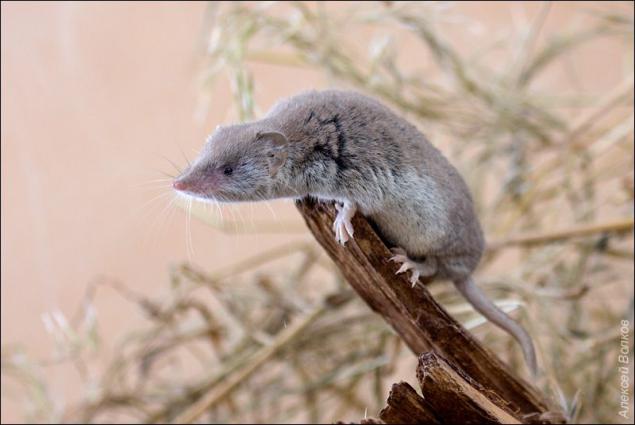
By the number of species of shrew ranks 3rd among mammals - after rodents and bats. Yes, and by the number of individuals in the lead, just I prefer not to get our eyes.


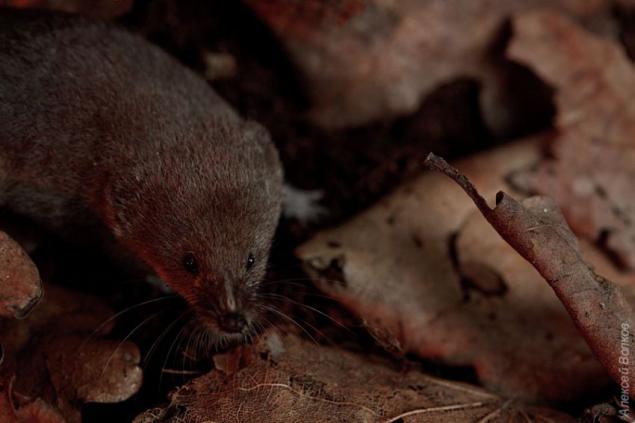
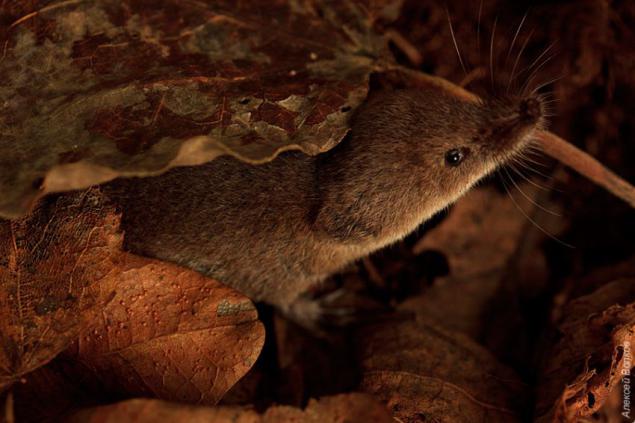
Source: haritonoff.livejournal.com

But nothing special would not be - then they would eat much less, about as much as any other animal the size of a dog: small shrew eats a lot, not because it is a shrew, but because it is small. Warm-blooded animals are smaller, faster lose heat, and the faster they need to replenish energy losses. Therefore, shrews feed almost continuously, they even sleep properly once, sleeping fitfully on their own schedule, and the smaller the shrew, the greater her sleep-wake cycles during the day; so, a tiny shrew (Sorex minutissimus) per day divided into 78 intervals. From these animals die of hunger (again depending on the size) for 5-9 hours in the summer, and in winter even faster - for 3-4 hours. The most worthless to them that in the long-suspended animation, like other crumbs - bats - shrew really fall do not know how, though, and try (with a lack of food fall instead of sleeping in a stupor with a decrease in body temperature), and therefore forced to aktivnichat day and night, winter and in the summer.

In the summer of shrews feed mainly on animal food - arthropod, worms, and larger prey themselves, such as lizards and mice, and is rumored to manage their grubs with bones. Beekeepers say that is such a shrew, as in the picture, can alone devastate a hive and jump to the next. And that, perhaps, the only harm from the shrews, the rest - continuous use: the population of these animals living on one hectare, absorb over the last month from 5 to 20 kg of various insects, and for the year - 100-200 kg. Gluttony is a natural side effect - shrews much cocoa, thus contributing to a lot of soil formation.

In the winter of arthropods as tight as the demand for energy increases, and shrews have to add to your diet and seeds applied ability called "phenomenon DENEL" - they reduced the size of the body, including the skull, and the weight of the brain. Spring animals grow back and re-grow their brains.

A shrew brains - God forbid everyone, their weight is about 1/10 of the body weight, it is more than that of any other mammal, including humans. In addition to the brain evolution has endowed these animals the ability to echolocation, and water shrew (only natatorial kind) - and even paralyzing saliva that makes bitten her immobility and invertebrates retain freshness for 3-5 days. Refers to the aforementioned shrew shrew one subfamily - burozubochih and teeth are really brown - their enamel pigments reinforced with iron for greater strength. Change of milk teeth is still in the womb.

Shrews do not dig the ground - their legs are ill-suited for this. Enjoy ready burrows of rodents, and more - just inhabit the forest floor. And they are called so because in the land of "digging" - with the help of his elongated nose, proboscis seek out the top layer of loose soil insects hiding there. Their main instrument of orientation at night among the intertwining roots and stems, in addition to smell and touch, is echolocation.
Hunting way shrews are constructed in such a way that one day, she eats only a small portion of the territory and return to it again just a few days, when it will recover supplies of food. And the size of the territory depends on the season.

In autumn, when the number of shrews is greatly increased at the expense of young people for summer, one small animal goes to a small area of 300-500 sq.m. In winter, many animals die, and survivors in the spring gets about twice as large plots - the offspring of the plant.

During the summer, they manage to give rise to two or three broods of young shrews. In July and August the number of shrews peaks - an average of 40 animals per hectare, and then decreases as the die-life obsolete old animals. The first year of the young and high-spirited shrew is growing and gaining strength, but have not yet reached puberty. After winter, if you're lucky, and she survives, they have the ability to reproduce, and by doing it his duty to nature, dying, giving way to their hunting grounds to the next generation. So spinning the wheel of life.

The cubs grow fast, and you do not lose the mother they have an interesting technique - when it is time to find a new hole or necessity compels the family to leave the shelter, one of the cubs missing mummy's ass, while another dyatё enough ass already clinging to the mother of the cub, and so on in turn. And so a makeshift train travels over the surface. For one night putoraki can easily walk about 8 kilometers ...

Sometimes the train is stuck, because from mothers having their own plans, and the cubs never fail to grab for the mother if she suddenly ran past.
It looks very fun.

And when the kids are tired of the constant search for the mother, they bunch up and go to sleep, because they know for sure that their caring mother, and certainly not throw enough. It always happens, the mother of a hurricane hits the land of nod, and the new train sets off.

Despite the tough struggle to fill up an adversary to our hero it could not be proved to be too hard chitin shell Madagascar cockroach.

By the number of species of shrew ranks 3rd among mammals - after rodents and bats. Yes, and by the number of individuals in the lead, just I prefer not to get our eyes.




Source: haritonoff.livejournal.com
Tags
See also
Shrews
Rodents
Interesting facts about the rodents
History of one byte
Snakes region (4 photos)
How to recognize that you are too much give
The Book of General Ignorance. Part 2 (30 pics)
Employees of the Federal Migration Service in search of illegal immigrants on the market
It's sad, but vitally

















